17 Best Core Exercises For Women (With Workout Examples)
Author:
Unlock your full potential by engaging with our experts and community! Have questions about your fitness journey or looking for expert advice on weightlifting techniques? Don’t hesitate — leave a comment below and Ernesto Mendez will provide a personalized answer and insights to help you reach your goals.
Torokhtiy is reader-supported. Some links are affiliate links, and we may earn a commission at no extra cost to you. See our disclosure page for details.
In this article, we will cover the best core exercises for women, highlight the significance of core strength, and provide a variety of exercises to help you develop a stable and robust core. Whether a beginner or an experienced fitness enthusiast, this guide has something for everyone. Let’s dive into the world of female core workouts.
Best core exercises for women target core muscles and improve stability and strength. A variety of exercises can help develop a functional core.
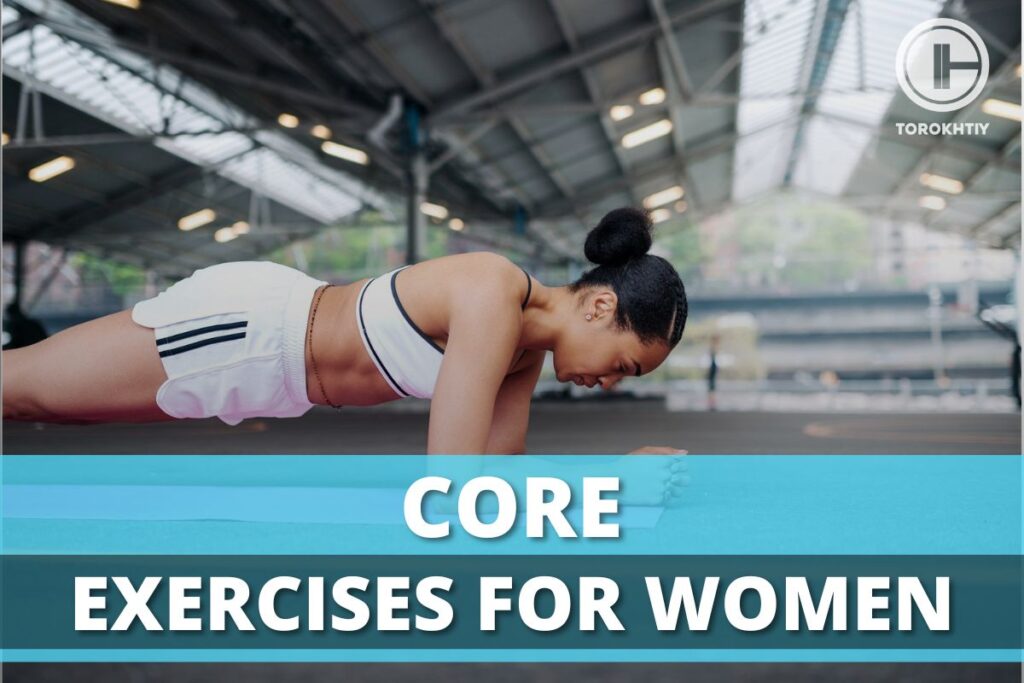
General Anatomy and Physiology Of The Core
Maintaining a strong and healthy core is paramount, especially for women. The core encompasses a group of muscles, including the rectus abdominis at the front, the internal and external obliques on the sides, the erector spinae, lumbar multifidus, and quadratus lumborum at the back, the diaphragm at the top, and the pelvic floor and iliac psoas at the bottom. Core stability is required for adequate weight distribution across the spine, pelvis, and kinetic chain.
However, fitness and health professionals consider the transversus abdominis, lumbar multifidus, and quadratus lumborum as the vital core muscles.
The rectus abdominis, commonly called the “six-pack” muscles, are crucial for women, as they aid in flexing the spine and maintaining proper posture for overall health, especially during pregnancy. The obliques are responsible for trunk rotation and side-to-side movements, necessary for everyday activities such as lifting and twisting.
The transverse abdominis, also known as the body’s natural corset, is critical in stabilizing the spine and pelvis, providing essential body support, particularly during and after pregnancy. Finally, your core stability depends on the lower back, particularly the lumbar portion of the spine. Although the lumbar spine has five vertebrae (L1 to L5), the lower back muscles primarily comprise the erector spinae, multifidus, and quadratus lumborum.
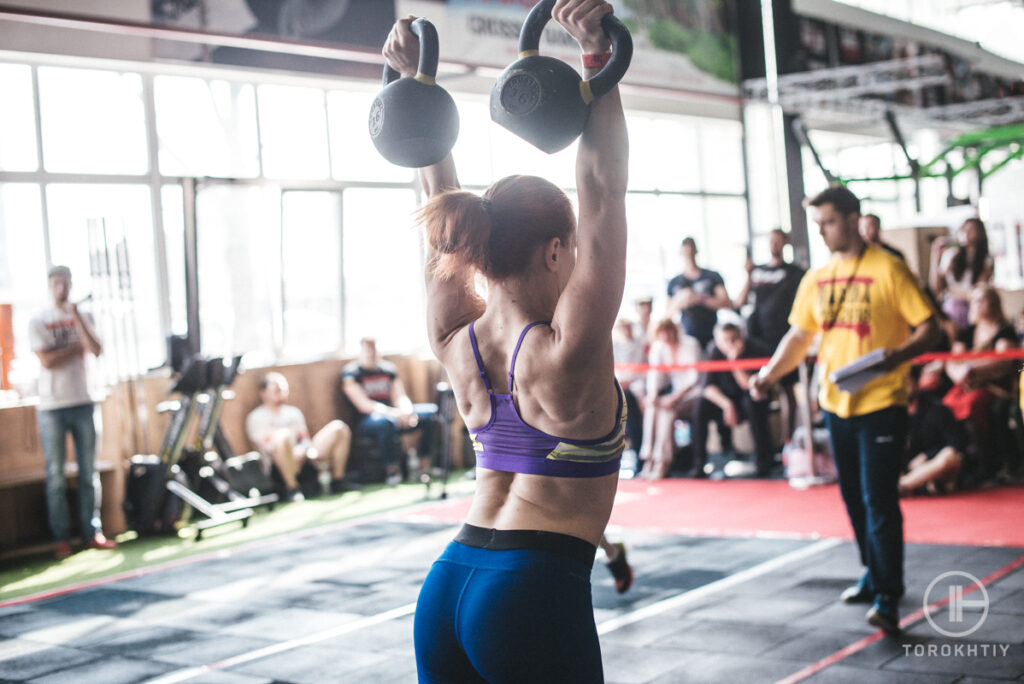
These muscles help maintain core strength and stability even as the body undergoes physical changes. Additionally, lower back muscles support the lower spine and facilitate movements such as extension, which are crucial for women who often lift, carry, bend, and support during pregnancy. In conclusion, a strong and fit core is vital for women before and after pregnancy. It helps maintain good posture, reduces the risk of back pain, and enhances overall stability during everyday tasks, making it an essential component of women’s health and well-being.
Importance of Core Strength for Women
A strong core is essential for women because it affects their physical health and overall well-being. To begin, strong core muscles give necessary stability and support for the spine and pelvis, assisting in appropriate posture. This is especially important for women, who frequently perform everyday tasks such as lifting and carrying children, groceries, and household goods. Women with strong core muscles are less likely to have back pain and discomfort, allowing them to live an active and pain-free life.
Core workouts for women also improve athletic performance and lower the chance of injury during physical activity. Women participating in sports, exercise routines, or other physical activities benefit from a strong core since it improves their agility, endurance, and general physical skills.
Maintaining a strong core is crucial for women’s health, especially during pregnancy. The core muscles, including the rectus abdominis, obliques, transverse abdominis, and lower back muscles, work together to support the developing belly and maintain balance and stability while responding to changes in the body’s center of gravity. After pregnancy, weakened core muscles can cause a medical condition called diastasis recti abdominis.
Between 33% and 60% of pregnant women are estimated to suffer from diastasis recti, depending on the study and criteria used for diagnosis. This condition occurs due to the stretching and separating of the connective tissue between the left and right sides of the rectus abdominis muscles, resulting in a noticeable gap in the abdominal wall. Pregnancy, rapid weight gain, or improper core training are common contributing factors for this condition, underscoring the importance of maintaining a solid core to prevent diastasis recti.
Last but not least, core strengthening exercises for women are essential for physical preparedness, athleticism, fitness and wellness. Also, it contributes to a sense of confidence and empowerment. It gives women the power and stability to live an active and pain-free life, especially during pregnancy and their daily routine. A strong core instills confidence in one’s physical ability, boosting self-esteem and body image. In summary, a robust core promotes physical health, self-esteem, and overall quality of life.
Consequences of Women Having A Weak Core:
Women with weak core muscles often face many consequences that can significantly impact their well-being. One of the most noticeable effects is poor posture, leading to chronic back pain and discomfort. Weak core muscles struggle to support the spine and pelvis, increasing the likelihood of developing lower back pain. Additionally, weakened core muscles may affect balance and stability, making women more susceptible to falls and injuries during everyday activities or exercise.
The rectus abdominis, obliques, transverse abdominis, and lower back muscles work harmoniously to provide essential support. Women can experience difficulty maintaining balance and stability when these muscles are underdeveloped. Furthermore, weak core muscles may lead to muscle imbalances, affecting the alignment of the spine and pelvis and potentially causing long-term orthopedic issues. A soft core can compromise a woman’s physical health, limiting her ability to lead an active, pain-free, and injury-resistant lifestyle.
Most Popular Core Exercises for Women
Now, let’s explore the most popular core workout routine for women, focusing on the specific core muscles they target.
1. Exercises to Strengthen The Rectus Abdominis
The Rectus Abdominis is a vertical muscle located in the front of the abdomen, known as the “six-pack” muscle. It is an essential abdominal wall muscle divided into two halves, left and right, by a robust connective tissue called the linea alba. The Rectus Abdominis is crucial in maintaining posture, core stabilization, and spine flexing. It is a popular target for core-strengthening activities since it gives the abdomen a defined and sculpted appearance when well-developed.
- Crunches: Lie on your back, bend your knees, and raise your upper body.
- Leg Raises: Lie on your back, lift your legs off the ground, and gently lower them.
- Sit-ups: Lie on your back with your knees bent and your hands behind your head or across your chest. Engage your core and raise your upper body off the ground while keeping your feet grounded.
- Plank: Begin in a push-up posture, with your forearms on the ground and elbows precisely beneath your shoulders. Keep your body straight from head to heels, engage your core, and hold the position.
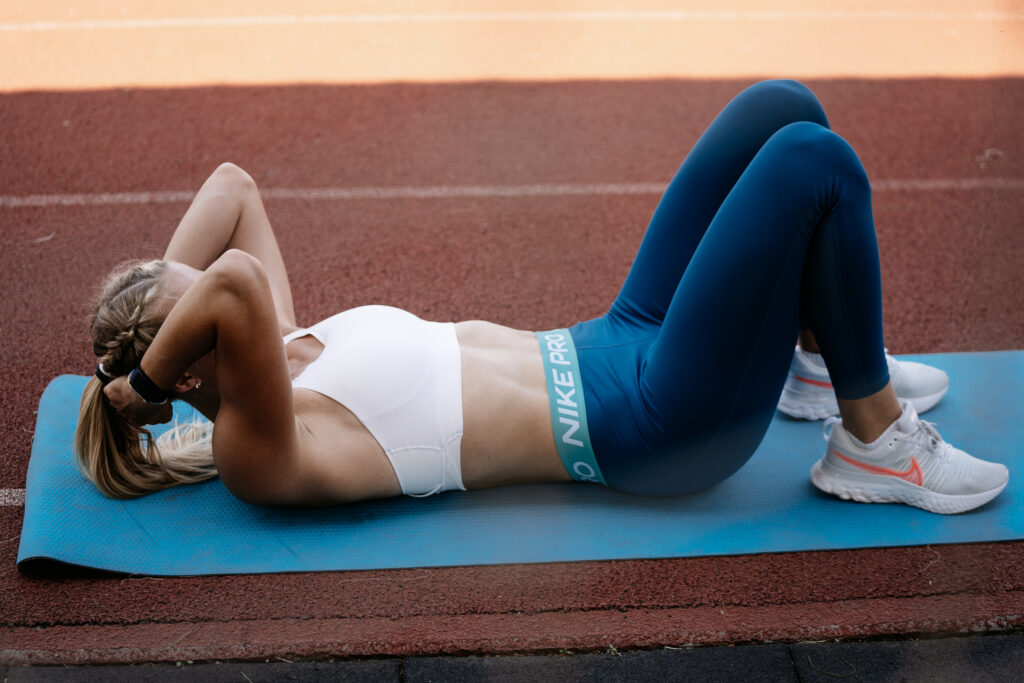
2. Exercises to Strengthen The Obliques
The Rectus Abdominis is a vertical muscle located in the front of the abdomen, known as the “six-pack” muscle. It is an essential abdominal wall muscle divided into two halves, left and right, by a robust connective tissue called the linea alba. The Rectus Abdominis is crucial in maintaining posture, core stabilization, and spine flexing. It is a popular target for core-strengthening activities since it gives the abdomen a defined and sculpted appearance when well-developed.
- Russian or Oblique twists: Sit on the floor, bend your knees, lean slightly back, and twist your body to either side.
- Side planks: To do this, support your body on one elbow and the side of your foot, ensuring your body remains straight.
- Bicycle crunches: Lie on your back with your hands behind your head, lift your shoulders off the ground, and move your right elbow toward your left knee while extending your right leg in a pedaling action. Repeat this with the other side.
- Woodchoppers: Stand with your feet shoulder-width apart, grasp a weight or medicine ball with both hands and pivot at your hips and waist to move the weight diagonally across your body from a high position on one side to a low position on the opposite side.
3. Specific Exercises to Strengthen The Transverse Abdominis
The Transverse Abdominis (TVA) is a deep abdominal muscle that maintains core stability and posture. Unlike other abdominal muscles that move the trunk, the TVA’s primary function is to compress the abdominal contents, providing spinal support and core stability. It is often called a natural corset because it secures the abdominal organs and provides a stable base for various movements. It’s essential to perform exercises that target the TVA to maintain core strength and prevent lower back problems.
- Planks: Stand on your forearms and toes, keeping your back straight and your core engaged.
- Vacuum Exercise or Transverse Abdominis Contraction (TAC): Stand up straight, breathe completely, and suck your stomach for several seconds.
- Leg Slides: Lying on your back with your legs straight, slide one heel over the ground while keeping your core engaged, then return to the beginning position and repeat with the other leg.
- Bird-dog: start on your hands and knees, extend one arm forward while simultaneously extending the opposite leg backward, and hold the position for a few seconds, then return to the starting position and repeat with the other arm and leg.
- Bananas or V-ups: Lying on your back, engage your core, and lift your upper body and legs off the ground, aiming to create a “banana” shape with your body while reaching your hands toward your toes, then lower back down with control.
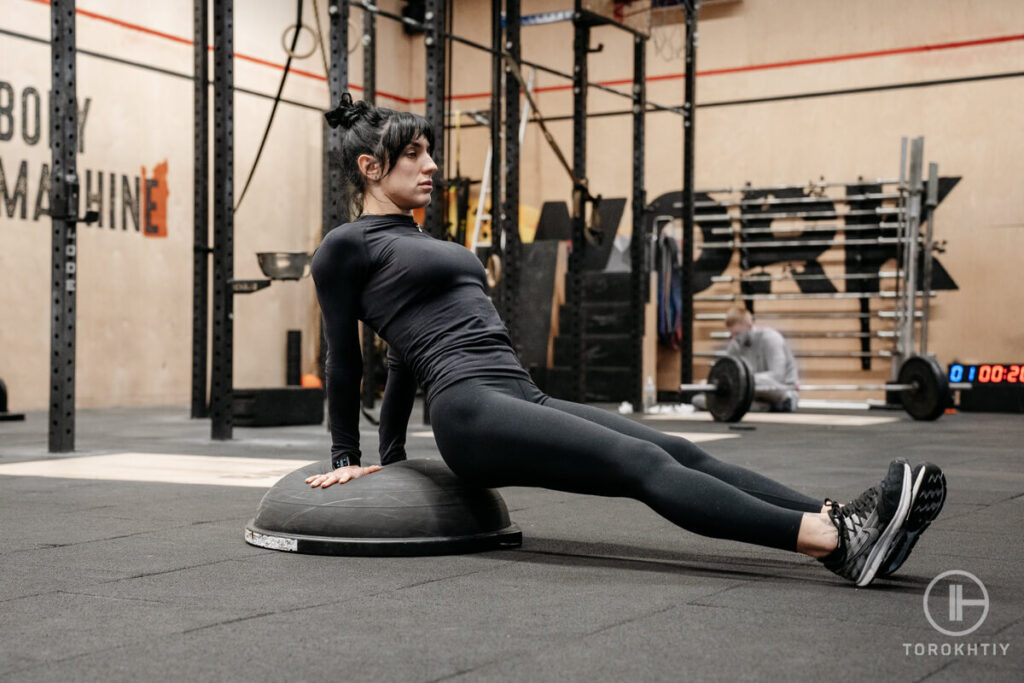
4. Specific Exercises to Strengthen The Lower Back
The lower back muscles are crucial for maintaining core stability. They help maintain an upright posture, preserve the spine’s curvature, stabilize the core, enable spinal flexion and extension, and absorb compressive forces. Exercises targeting the lower back and the entire core are essential for comprehensive core strength and stability.
- Superman or lower back extension: Lie face down and raise your arms and legs simultaneously, engaging your lower back.
- Reverse Hyperextension: Lie face down on a bench or other suitable surface, grip the edges for support, and lift your legs and lower back off the bench by engaging your lower back and glute muscles, then lower them down with control.
- Bridges: Lie on your back with knees bent, feet flat on the floor, and arms at your sides, then lift your hips off the ground by squeezing your glutes and lower back down to the starting position.
- Bird-dog: start on your hands and knees, extend one arm forward while simultaneously extending the opposite leg backward, and hold the position for a few seconds, then return to the starting position and repeat with the other arm and leg.
Follow us!

Free!
Get a 2-week Weightlifting Program as a bonus for the subscription to kickstart your training plan!

Free!
Core Workout Plans for Women
Now, let’s outline great core exercises for women at home tailored to different fitness levels.
Beginner Core Workout For Women
For women looking to start building core strength, this beginner’s workout is an excellent way to begin. It’s designed to be manageable and effective, and you’ll perform it three days a week for 10-15 minutes per session. Here are the core exercises:
- Planks (2 sets, 20-30 seconds each): Start in a push-up position with your forearms on the ground and elbows directly under your shoulders. Keep your body straight from head to heels, engage your core, and hold this position for the specified time.
- Crunches (2 sets of 15-20 reps): Lie on your back with your knees bent and feet flat on the floor. Cross your arms over your chest or place your hands behind your head. Engage your core, lift your upper body off the ground, and lower it down with control to complete one repetition.
- Leg Raises (2 sets of 10-15 reps): Lie on your back with your legs straight. Place your hands under your hips for support if needed. Lift your legs off the ground, keeping them directly, and lower them slowly, engaging your core throughout the movement.
Perform each exercise with proper form and focus on engaging your core muscles. As you become more comfortable and stronger, you can gradually increase the duration or repetitions to continue challenging your core muscles. This workout is an excellent starting point for women who want to improve core strength and stability.
Intermediate Core Workout For Women
Once you’ve built a foundation with the beginner’s core workout, leveling up with an intermediate routine is time. This workout is designed for women who want to enhance their core strength and stability further. Perform it 4-5 days a week for 20-30 minutes per session.
- Side Planks (3 sets, 20-30 seconds on each side): Support your body on one elbow and the side of your foot, maintaining a straight line from head to heels. Engage your core and hold for the specified time on each side.
- Russian Twists (3 sets of 15-20 reps): Sit on the floor with your knees bent, lean back slightly, and twist your torso to each side, touching the ground with the weight of your hands.
- Leg Slides (3 sets of 12-15 reps): Lie on your back with your legs straight. Slide one heel along the ground while engaging your core, then return to the starting position and repeat with the other leg.
- Bicycle Crunches (3 sets of 15-20 reps): Lie on your back with your hands behind your head. Lift your shoulders off the ground, alternately bringing your right elbow toward your left knee while extending your right leg and vice versa.
- Reverse Hyperextensions (3 sets of 10-12 reps): Lie face down on a bench or a suitable surface, ensuring your hips are at the edge of the bench and your legs hang freely. Grip the edges of the bench or use the handles for support. Engage your lower back, glutes, and hamstrings. Lift your legs and lower back off the bench, creating a slight arch in your lower back. Focus on squeezing your glutes at the top of the movement. Lower your legs and lower back down to the starting position with control.
This intermediate core workout introduces more challenging exercises and increased sets and repetitions. It will help you progress toward a more robust and more stable core. Focus on proper form and engage your core throughout each exercise. Gradually increase the intensity as you gain strength and confidence.
Advanced Core Workout For Women
If you’ve mastered the beginner and intermediate core workouts and are ready for a more challenging routine, this advanced core workout for women will take your core strength to the next level. Perform this workout 5-6 days a week for 30-40 minutes per session.
- Vacuum Exercise (3 sets, 20-30 seconds each): Stand straight, exhale all your air, and suck your stomach, holding for the specified time. This exercise focuses on deep-core engagement.
- Back Extensions (3 sets of 15-20 reps): Use a back extension bench or Roman chair. Begin with your upper body hanging down and your legs secured. Lift your upper body until it’s in line with your legs, then lower it back down.
- Woodchoppers (3 sets of 12-15 reps per side): Stand with your feet shoulder-width apart, hold a weight or medicine ball with both hands, and pivot at your hips and waist to bring the weight diagonally across your body from a high position on one side to a low position on the opposite side.
- Plank Variations (3 sets, 30-40 seconds each): Incorporate plank variations such as side plank leg lifts, forearm plank with shoulder taps, or knee-to-chest movements to challenge your core differently.
This advanced core workout introduces more intense exercises and variations. It will help you enhance core strength, stability, and endurance. Remember to maintain proper form and engage your core muscles during each exercise.
Our Recommended Core Program
If you’re searching for a way to take your fitness routine to the next level, we highly recommend the Torokhtiy back and core workout program. This program consists of 21 expert-designed workouts that prioritize core strengthening and fat loss, allowing you to achieve the best possible results. Whether you prefer to exercise at home or on the go, these versatile routines require minimum equipment, making them perfect for anyone looking to get fit. By making these exercises a regular part of your fitness routine, you’ll be on the path to achieving a stronger, healthier core and back.
FAQ:
Should Women Do Core Workouts?
Women should add core training to their fitness programs. Core workouts are critical for improving posture, keeping your back healthy, and increasing general strength. A strong core also supports daily activities, especially during pregnancy and after recovery. Core workouts help women provide a solid basis for their fitness objectives, which range from increased balance and flexibility to improved athletic performance.
Is It Ok to Do Core Exercises Every Day?
Core exercises can be performed daily, but balancing is essential to avoid overtraining. While core muscles are crucial for stability and posture, like any muscle group, they require time for recovery. Alternating core workouts with rest days is generally advisable to prevent fatigue and allow muscles to repair and grow effectively. A well-rounded fitness routine incorporates core exercises regularly, but overdoing it may lead to diminished results and potential injury, so moderation and variety are key.
What Are the Signs of a Weak Core?
Poor posture, lower back pain, balance issues, and decreased athletic performance can indicate a weak core. Strengthening your core can help alleviate these issues and improve your well-being. A soft core can also lead to poor posture, lower back pain, and balance difficulties.
Conclusion
Core exercises for women are a cornerstone of overall well-being. By strengthening your core, you improve posture, reduce the risk of back pain, and enhance your stability during daily activities and workouts. We’ve discussed the importance of core strength and covered a range of practical exercises to target different core muscles. Additionally, we provided customized workout plans suitable for women at various fitness levels. It’s time to embark on your journey towards a stronger core and a healthier you. Have questions or personal experiences to share? We invite you to engage with us in the comment section below. Let’s learn, motivate, and empower each other to achieve our fitness goals!
References:
- Oliva-Lozano JM, Muyor JM. Core Muscle Activity During Physical Fitness Exercises: A Systematic Review. Int J Environ Res Public Health. 2020 Jun 16;17(12):4306. doi: 10.3390/ijerph17124306. PMID: 32560185; PMCID: PMC7345922.
- Cavalli M, Aiolfi A, Bruni PG, Manfredini L, Lombardo F, Bonfanti MT, Bona D,
Campanelli G. Prevalence and risk factors for diastasis recti abdominis: a review and proposal of a new anatomical variation. Hernia. 2021 Aug;25(4):883-890. doi: 10.1007/s10029-021-02468-8. Epub 2021 Aug 6. PMID: 34363190; PMCID: PMC8370915. - Akuthota, V., & Ferreiro, A. (2005). Core stability exercise principles. Current Sports Medicine Reports, 4(3), 179-183.
- Chertoff, J. (2023, July 13). Diastasis Recti: What is it, and how is it treated? Healthline. https://www.healthline.com/health/diastasis-recti#_noHeaderPrefixedContent
- Willardson, J. M. (2007). Core stability training: applications to sports conditioning programs. Journal of Strength and Conditioning Research, 21(3), 979-985.
Why Trust Us?
With over 20 years in Olympic weightlifting, strength training, nutrition coaching, and general fitness our team does its best to provide the audience with ultimate support and meet the needs and requirements of advanced athletes and professional lifters, as well as people who strive to open new opportunities and develop their physical capabilities with us.
By trusting the recommendations of our certified experts in coaching, nutrition, and sports training programming, as well as scientific consultants, and physiotherapists, we provide you with thorough, well-considered, and scientifically proven content. All the information given in the articles concerning workout programming, separate exercises, and athletic performance, in general, is based on verified data.
The product testing process is described in more detail here.
Author: Ernesto Mendez
Orthopedic Clinical Specialist
Best Results: Snatch – 208 kg,
C&J – 240 kg
Dr. Ernesto Mendez is a licensed physical therapist, a board Orthopedic Clinical Specialist (OCS) and founder of Movement 4 Wellness Physical Therapy, LLC. He earned his degree from Thomas Jefferson University. He is also an Olympic weightlifting coach (USAW L1) and Functional Fitness Level 1 Trainer. His experience includes the areas of pain management, movement analysis, injury recovery, surgical rehab, corrective exercise, and athletic, military, and occupational performance. Dr Mendez is passionate about Olympic weightlifting and fitness. Ernesto Mendez is responsible for designing multiple training programs, writing blog articles, posting daily weightlifting content, doing live weightlifting and mobility seminars.



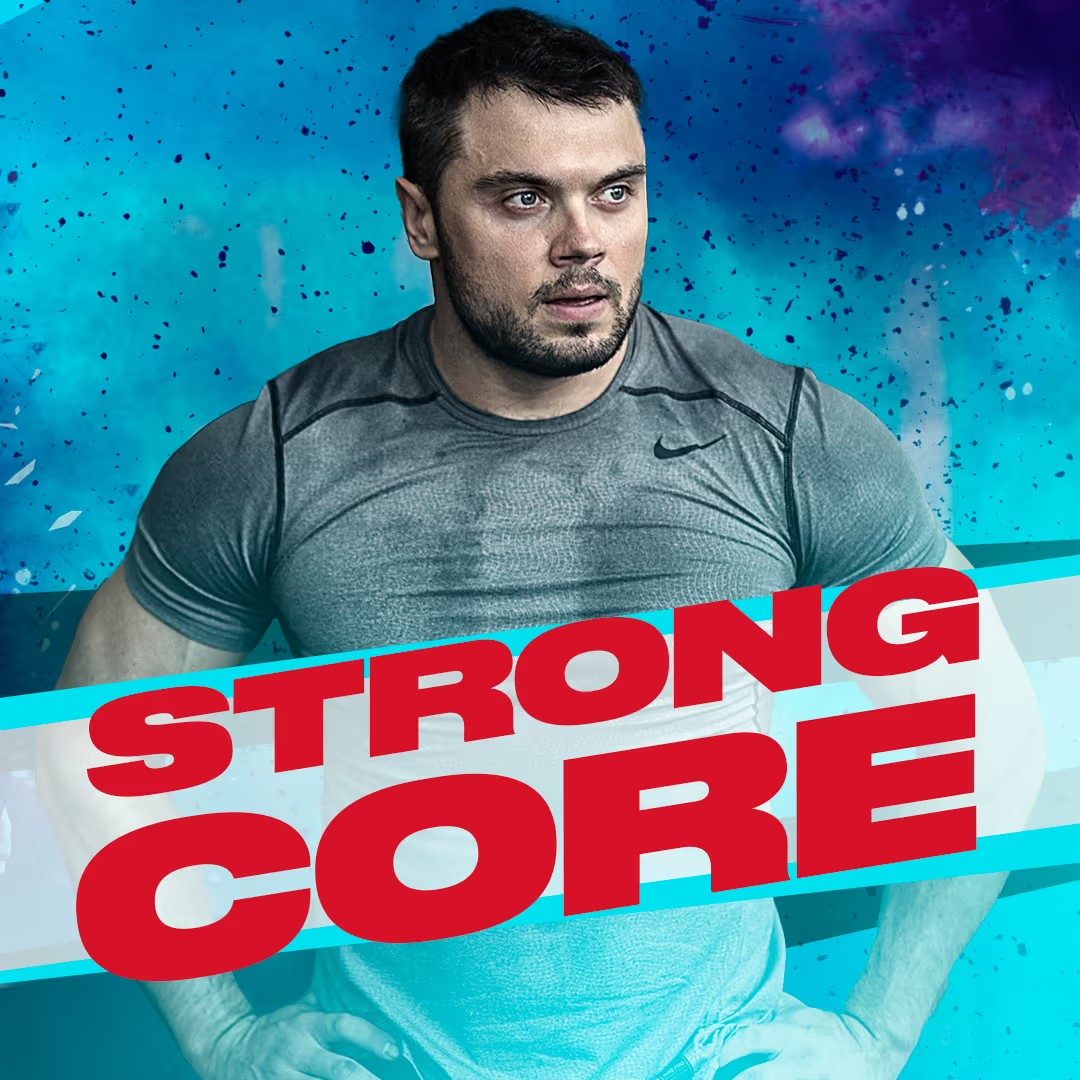
Still have questions after reading our article? Unlock your full potential by engaging with our experts and community! Don’t hesitate — leave a comment below and Ernesto Mendez will provide a personalized answer and insights to help you reach your goals.